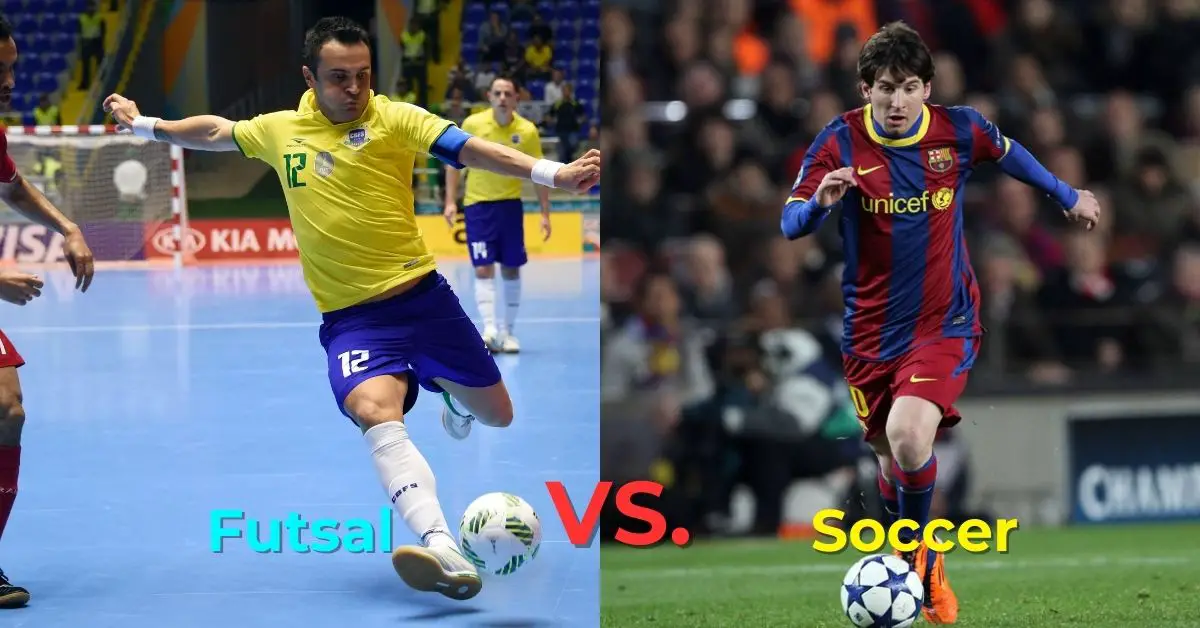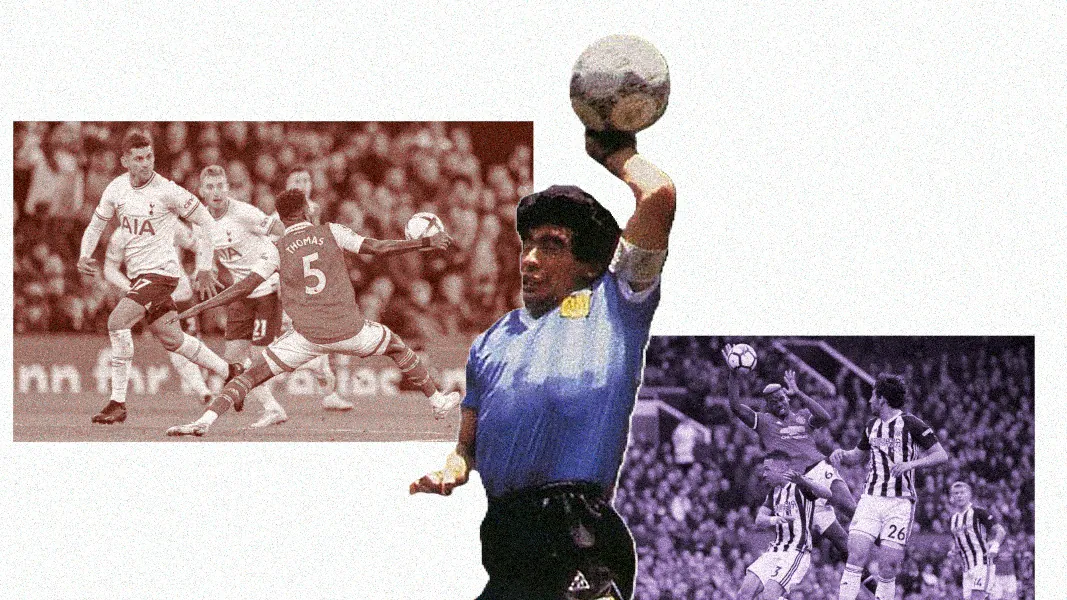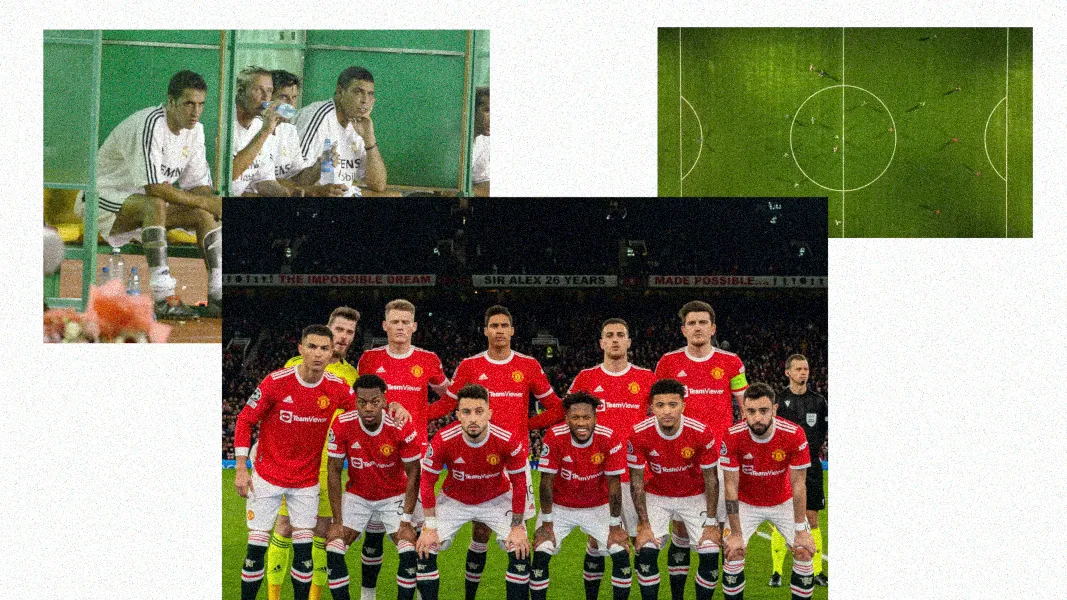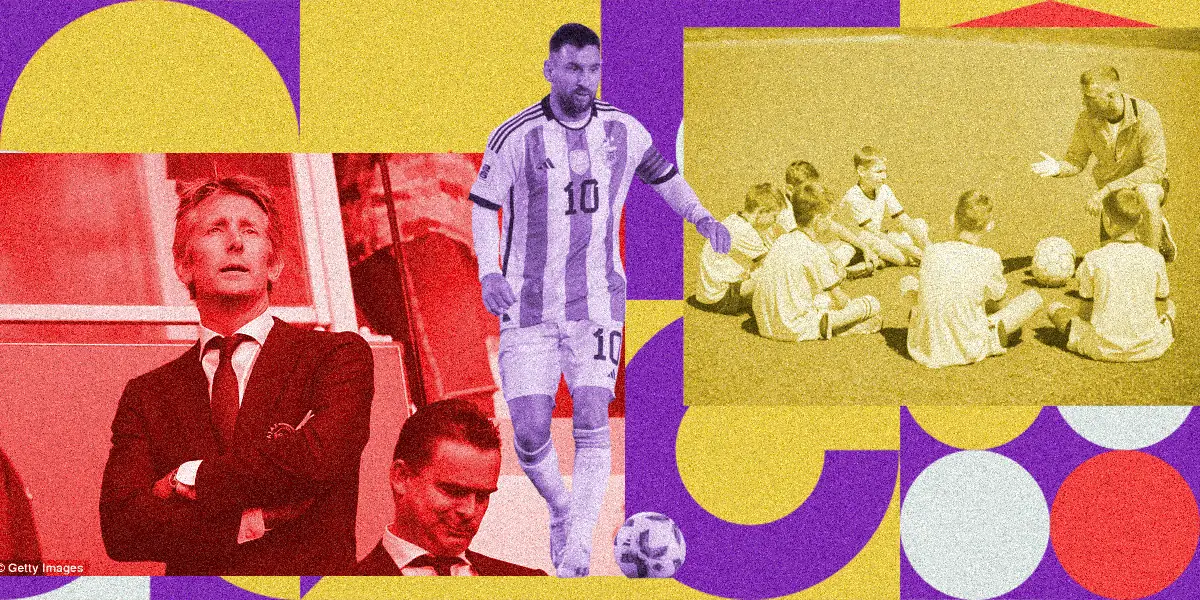Futsal and Soccer, while sharing a common heritage, are distinct variants of the beautiful game.
Futsal is a fast-paced indoor sport played on a smaller, hard court with a smaller ball. Soccer, on the other hand, is the well-known outdoor version, played on a larger field. It involves a larger team and longer matches.
Both sports, though different in their approach, share a universal love for the game and have captivated enthusiasts worldwide.
In this discussion, we will delve into the unique attributes of futsal and soccer, shedding light on how they contrast in terms of rules, skills, and playing styles. By the end, you’ll have a comprehensive grasp of what sets these sports apart and why it matters.
Key Takeaways:
- Futsal emphasizes close ball control and quick decision-making in a smaller, confined space.
- Soccer focuses on endurance, long-range passing, and aerial play on a larger field.
- Each sport has its own set of rules, including variations in court dimensions, team sizes, and match durations.
- Goalkeeping styles differ, with futsal goalkeepers often involved in outfield play, while soccer goalkeepers focus more on shot-stopping abilities.
- Both sports offer unique skill sets that can complement and enhance a player’s proficiency in the other.
Historical Backgrounds of Soccer and Futsal
Futsal
Futsal’s origins trace back to Uruguay in the 1930s. Juan Carlos Ceriani, a physical education teacher, devised the game as a solution for his students to play soccer indoors.
⏪114 years ago today Juan Carlos Ceriani was born. He's credited with inventing #futsal which spread from Uruguay through the global network of YMCAs to become one of the world's most popular sports & continues to grow rapidly. HB to one of the world's greatest ever inventors. pic.twitter.com/gOy2OTuCQF
— Doug Reed (@DougReedFutsal) March 9, 2021
The name “futsal” itself is a blend of Spanish words: “fútbol” (football) and “sala” (room). From its humble beginnings, the sport gained popularity in South America, particularly in Brazil, where it flourished in the crowded urban spaces.
In 1936, the first official rules were established in Montevideo, solidifying futsal as a distinct sport. Over the years, it spread across continents, finding fervent followers in Europe, Asia, and beyond.
The sport’s evolution saw refinements in rules, court dimensions, and the introduction of international competitions. Today, Futsal stands as a globally recognized sport, celebrated for its fast-paced action and emphasis on skill and technique.
Soccer
Soccer, or football as it is known in most parts of the world, has ancient origins. Its roots can be traced back to various ball games played by civilizations like the Greeks, Romans, and Chinese.
However, the modern form of soccer emerged in 19th century England. The establishment of standardized rules in 1863 by the Football Association (FA) marked a pivotal moment in the sport’s history. This event led to the widespread adoption of the game and the creation of organized competitions.

Soccer quickly spread beyond England’s borders, finding avid enthusiasts across Europe, South America, and beyond. The inaugural international match took place in 1872 between England and Scotland.
Over time, the sport’s popularity surged, giving rise to national leagues, and eventually, global tournaments like the FIFA World Cup, which debuted in 1930. Soccer’s evolution continued with advancements in equipment, tactical strategies, and the establishment of professional leagues worldwide. Today, it stands as the world’s most popular sport, captivating billions of fans and players from every corner of the globe.
Court Dimensions and Equipment
Futsal
Embed from Getty ImagesA futsal court measures 40 meters in length and 20 meters in width, making it considerably smaller than a standard soccer field.
The court is typically marked with boundary lines that denote the playing area. Additionally, it is surrounded by walls or boards, which help keep the ball in play and facilitate a faster-paced game.
The surface of a Futsal court is typically made of a hard material, such as wood or artificial flooring, ensuring a consistent and reliable playing surface.
Soccer
Embed from Getty ImagesA standard soccer field measures approximately 100 meters in length and 50 meters in width. These dimensions provide ample space for the players to maneuver and employ various strategies during a match.
The field is marked with boundary lines, including touchlines (sidelines) and goal lines, to clearly define the playing area. At each end of the field, there is a penalty area, which extends 16.5 meters from the goal line and 40 meters in width.
Additionally, a center circle with a radius of 9.15 meters is marked at the middle of the field, where the game begins and restarts after goals.
Variation in ball Size and Weight
Embed from Getty ImagesA standard soccer ball is spherical with a circumference of about 68-70 centimeters and weighs approximately 410-450 grams. This size and weight allow for controlled passes, precise shots, and skilled maneuvers.
Embed from Getty ImagesIn contrast, a futsal ball is smaller and slightly heavier. It typically has a circumference of 62-64 centimeters and weighs about 400-440 grams. The smaller size facilitates tighter control and swift dribbling on the confined court. The added weight of a futsal ball lends itself to a more controlled and deliberate style of play.
Number of Players in Futsal vs Soccer
In futsal, each team comprises five players, including one goalkeeper. This smaller team size fosters a fast-paced, dynamic style of play, demanding quick decisions and close cooperation among players.
Conversely, soccer is played with larger teams. A standard soccer team consists of eleven players, including one goalkeeper. The larger team size allows for a broader range of positional strategies and tactics, as well as more players to cover the extensive field.
Special Rules and Regulations
Futsal
Unlimited Substitutes and Rotations
In futsal, teams are allowed to make unlimited substitutions during stoppages in play. This allows for continuous, high-energy gameplay. Substitutes must enter and exit the court via a designated substitution zone.
Rotation strategies are employed to maintain team cohesion and distribute playing time. Players often rotate positions to optimize their strengths and adapt to changing game dynamics. Effective rotations ensure that each player contributes their skills effectively.
Violations Specific to Futsal
Embed from Getty Images- Kick-ins: When the ball goes out of play, it must be kicked back into play from the touchline (rather than a throw in). The player taking the kick-in must ensure both feet are on or behind the touchline and that the ball is stationary.
- 6-second Rule for Goalkeepers: The goalkeeper is allowed a maximum of six seconds to release the ball after gaining possession. This rule prevents time-wasting and encourages a continuous flow of play.
Soccer
Offside rule

The offside rule in soccer is a fundamental regulation designed to maintain fairness and balance in the game. When an attacking player is positioned closer to the opponent’s goal line than both the ball and the second last opponent (usually the goalkeeper) at the moment the ball is played to them, they are deemed offside.
If an offside infringement occurs, the referee awards a free kick to the defending team from the location where the offside violation took place. This rule encourages attacking players to remain level with or behind the second last opponent before the ball is played to them.
Difference in Playing Style and Strategy Between Futsal and Soccer
Futsal
Emphasis on close control and quick passes
The confined space of the futsal court necessitates players to maintain close control of the ball. This enables them to navigate through tight spaces and evade defenders.
Quick, accurate passes are pivotal in futsal’s fast-paced nature. Players must swiftly exchange the ball to maintain possession and create scoring opportunities. The rapid tempo of the game leaves minimal room for hesitation.
This emphasis on precision and speed sets futsal apart and challenges players to elevate their technical abilities.
Defensive tactics in futsal
Defensive tactics in futsal often revolve around maintaining a compact formation, making it harder for the opposition to find openings. Players coordinate to block passing lanes and apply pressure strategically, aiming to force turnovers or errors. This disciplined approach is crucial in futsal’s confined space.
Additionally, futsal teams frequently employ zone defense, where players cover specific areas rather than marking individual opponents. This allows for quick transitions and helps counteract the rapid pace of the game.
Soccer
Tactical formations and strategies
Tactical formations and strategies hold significant importance in the game of soccer. They provide a structured framework for players to organize their positions on the field.
For instance, formations like 4-4-2 or 4-3-3 allocate specific roles to players. This strategic alignment helps teams balance offense and defense effectively. It also determines how players support each other in various phases of the game.
Furthermore, tactical strategies guide decision-making during play. Coaches may instruct their teams to adopt high-pressing tactics to regain possession quickly, or they may opt for a more defensive approach to maintain a solid backline.
Importance of set pieces
Set pieces in soccer carry substantial importance for teams. These moments, like free kicks, corner kicks, and penalties, offer strategic opportunities to score goals or create goal-scoring chances.
During a set piece, players can utilize planned tactics and movements, often rehearsed in training, to exploit the opponent’s vulnerabilities.
Defensively, set pieces demand rigorous organization to guard against potential threats. Players must mark their opponents tightly, anticipating runs and positioning themselves strategically.
The proficiency in executing and defending set pieces can be the difference between victory and defeat in a soccer match.
Physical Demands and Fitness in Soccer and Futsal
Both soccer and futsal impose distinct physical demands on players.
In soccer, the larger field and longer match duration necessitate enduring levels of stamina. Players cover extensive distances, requiring sustained cardiovascular fitness. Additionally, explosive bursts of speed and agility are crucial for offensive and defensive maneuvers.
In futsal, the smaller court and faster pace demand quick accelerations, decelerations, and frequent changes in direction. This places a premium on agility and rapid reflexes. Players engage in intense, short bursts of activity, requiring a blend of anaerobic and aerobic fitness.
Endurance, agility, and speed are fundamental components of physical fitness in both sports. Tailoring training regimes to address these specific demands is imperative for players to perform at their best in either soccer or futsal.
Skillset Emphasis in Futsal and Soccer
Futsal
Futsal places a distinct emphasis on specific skill sets that distinguish it from outdoor soccer.
Dribbling and close ball control are paramount. Players maneuver in tight spaces, necessitating precise handling of the ball to evade defenders. This demands exceptional technical proficiency.
Shooting accuracy and technique also hold particular importance. With limited space and time, players must be adept at striking the ball with precision to score goals.
Furthermore, spatial awareness and quick decision-making are vital. Players must read the game swiftly, exploiting openings and anticipating opponent movements.
Soccer
Soccer emphasizes a diverse range of skills crucial for success on the field.
Long-range passing and aerial play are significant. Players must be adept at accurately delivering passes over varying distances, and mastering aerial duels can lead to scoring opportunities.
Heading and crossing proficiency are key aspects of offensive play in soccer. Players use their heads to direct the ball with precision. And crossing involves delivering the ball into the opponent’s penalty area for teammates to attack.
Additionally, tactical awareness and positional play are paramount. Players need to understand their roles within the team and make informed decisions based on the game’s flow.
Differences in Goalkeeping Techniques
Embed from Getty ImagesIn futsal, goalkeepers are more involved in outfield play due to the smaller court size. They often participate in passing and playmaking, demanding refined ball-handling skills. Quick reflexes and agility are paramount, as futsal is characterized by rapid, close-quarter action.
Embed from Getty ImagesSoccer goalkeeping places a heavier emphasis on shot-stopping abilities. The larger field size and longer distances necessitate exceptional diving and shot-blocking skills. Aerial prowess is also crucial for handling crosses and high balls.
Distribution methods differ as well. In futsal, goalkeepers often throw or roll the ball, participating actively in building attacks. In soccer, they frequently employ long kicks or precise throws to initiate counterattacks.
Duration of Matches in Futsal and Soccer
In futsal, matches are divided into two halves, each lasting 20 minutes. These shorter intervals maintain a brisk pace, demanding consistent intensity and focus throughout the game.
Soccer, in contrast, employs longer periods. Matches consist of two halves, each lasting 45 minutes. This extended duration allows for more strategic play, greater opportunities for comebacks, and requires higher levels of endurance from players.
Frequency of Goals in Futsal vs Soccer
Embed from Getty ImagesIn futsal, the smaller court and rapid pace lead to more frequent goal-scoring opportunities. The confined space encourages quicker attacks and shots on goal. As a result, futsal matches tend to have higher scores.
Embed from Getty ImagesSoccer, on the other hand, with its larger field and longer match duration, often sees fewer goals. The increased space allows for more defensive cover, and players have to cover greater distances to create goal-scoring chances.
Popular Leagues and Competitions
Futsal
- Liga Nacional de Fútbol Sala (LNFS) – Spain: Established in 1989, it is one of the oldest and most competitive futsal leagues globally.
- Serie A – Italy: Italy’s top-tier futsal league boasts a high level of competition and has produced many world-class players.
- Liga Futsal – Brazil: Brazil, being a futsal powerhouse, has a robust league system. Liga Futsal is the premier competition, showcasing exceptional talent.
- Ekstraklasa Futsalu – Poland: Poland’s top futsal league has been gaining prominence in recent years, with a growing fan base and competitive teams.
- Futsal Thai League – Thailand: Futsal is highly popular in Thailand, and the league attracts international talent, contributing to its competitive edge.
- Russian Futsal Super League – Russia: Russia has a rich futsal tradition, and their top league features high-quality teams known for their tactical prowess.
Soccer
- UEFA Champions League – Europe: Europe’s top club competition, where the best clubs compete for the title.
- English Premier League (EPL) – England: The top-tier league in England, known for its competitive matches and global fanbase.
- La Liga – Spain: Spain’s premier soccer league, showcasing some of the world’s finest talent.
- Bundesliga – Germany: Germany’s top-tier league, known for its passionate fans and high-scoring matches.
- Serie A – Italy: Italy’s premier league, renowned for its defensive tactics and strategic gameplay.
- Major League Soccer (MLS) – United States: The top-tier soccer league in the United States and Canada, gaining popularity globally.
Popularity and Global Reach of Futsal and Soccer
Embed from Getty ImagesSoccer is the most popular sport worldwide, with billions of fans across continents. Its flagship event, the FIFA World Cup, draws global attention and viewership. Top leagues like the English Premier League and La Liga have massive global fanbases. Soccer’s grassroots presence is also significant, with millions of players participating at all levels.
Embed from Getty ImagesFutsal, although smaller in scale, has a strong following in various regions. It is especially popular in South America and Europe, with dedicated leagues and competitions. Futsal’s unique appeal lies in its fast-paced, skill-centric gameplay, attracting fans and players who appreciate its distinct qualities.
Both sports contribute to the global sports landscape, uniting people from diverse cultures under a common passion for the game.
How Playing Futsal Can Enhance Soccer Skills and Vice Versa
Futsal to Soccer
- Close Ball Control: Futsal, played in a confined space, demands precise ball control. This translates to soccer, where close control is crucial for dribbling and maintaining possession.
- Quick Decision Making: The fast-paced nature of futsal hones a player’s ability to make rapid decisions. This skill proves invaluable in soccer, where split-second choices can be game-changing.
- Spatial Awareness: Futsal’s small court fosters heightened spatial awareness. Players develop a better understanding of positioning, which carries over to soccer, aiding in offensive and defensive maneuvers.
Soccer to Futsal
- Endurance and Stamina: Soccer’s longer matches build endurance. In futsal, where the tempo is consistently high, this enhanced stamina gives players an edge.
- Long-Range Passing: Soccer’s emphasis on long-range passing translates well to futsal, where accurate distribution is pivotal in creating scoring opportunities.
- Aerial Play and Heading: Soccer’s aerial aspects, like heading, become valuable in futsal, where controlling and directing the ball in tight spaces is crucial.
Conclusion
In conclusion, the distinctions between futsal and soccer are striking yet complementary. Futsal’s confined space sharpens close control and quick decision-making, while soccer’s expansive field fosters endurance and strategic play.
Appreciating these differences is essential, as it allows us to recognize the unique qualities each sport brings to the world of soccer. Whether you’re a futsal enthusiast or a dedicated soccer fan, both sports offer their own exhilarating experiences and challenges.
I hope you enjoyed this in-depth comparison of soccer and futsal. If you did, then do consider sharing it with fellow soccer enthusiasts.
Your support and sharing of this content can help us reach a wider audience and provide valuable information to more people who share our passion for the beautiful game.
Thank you for supporting Soccer Mavericks!
If you liked this article, you will love to read:











